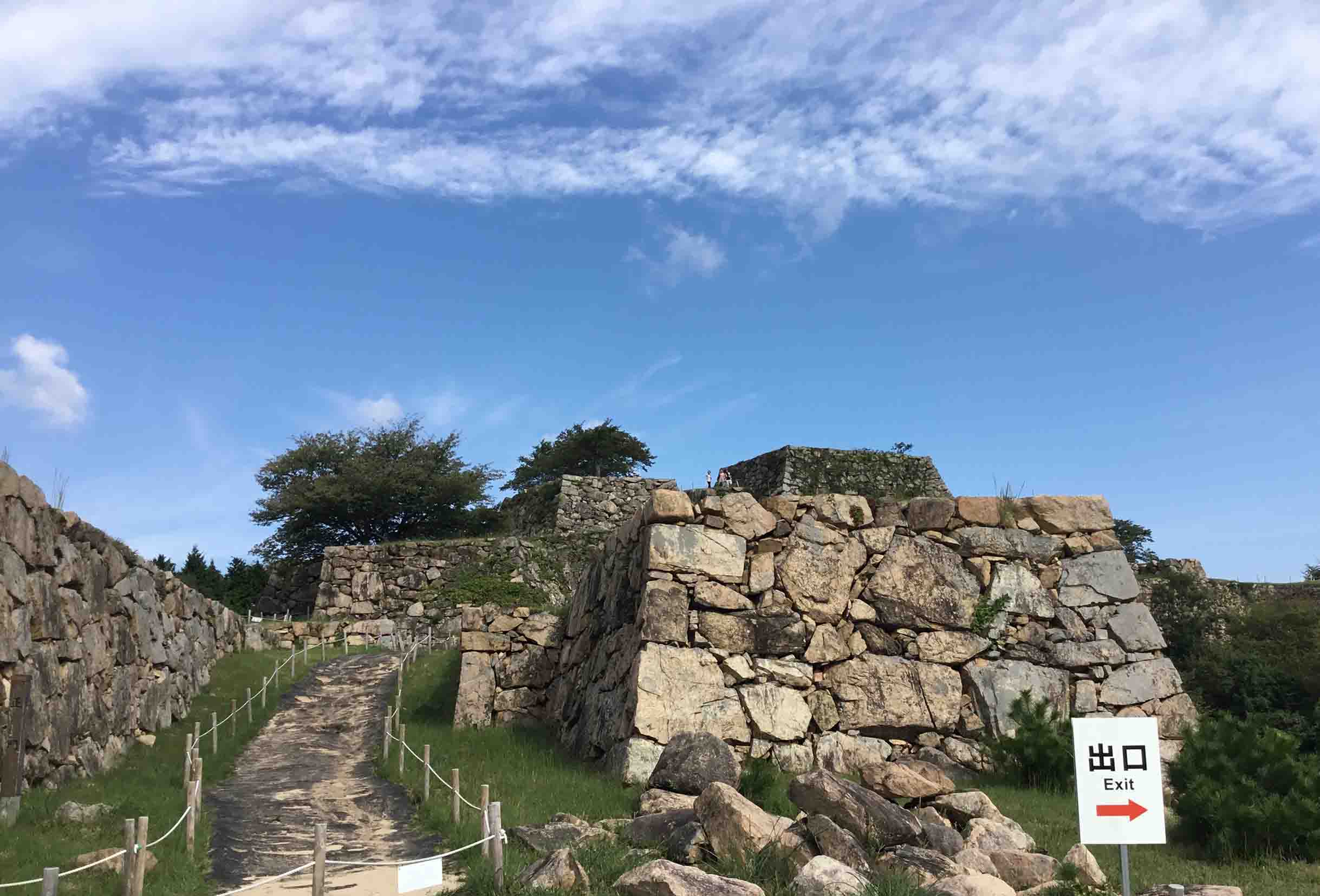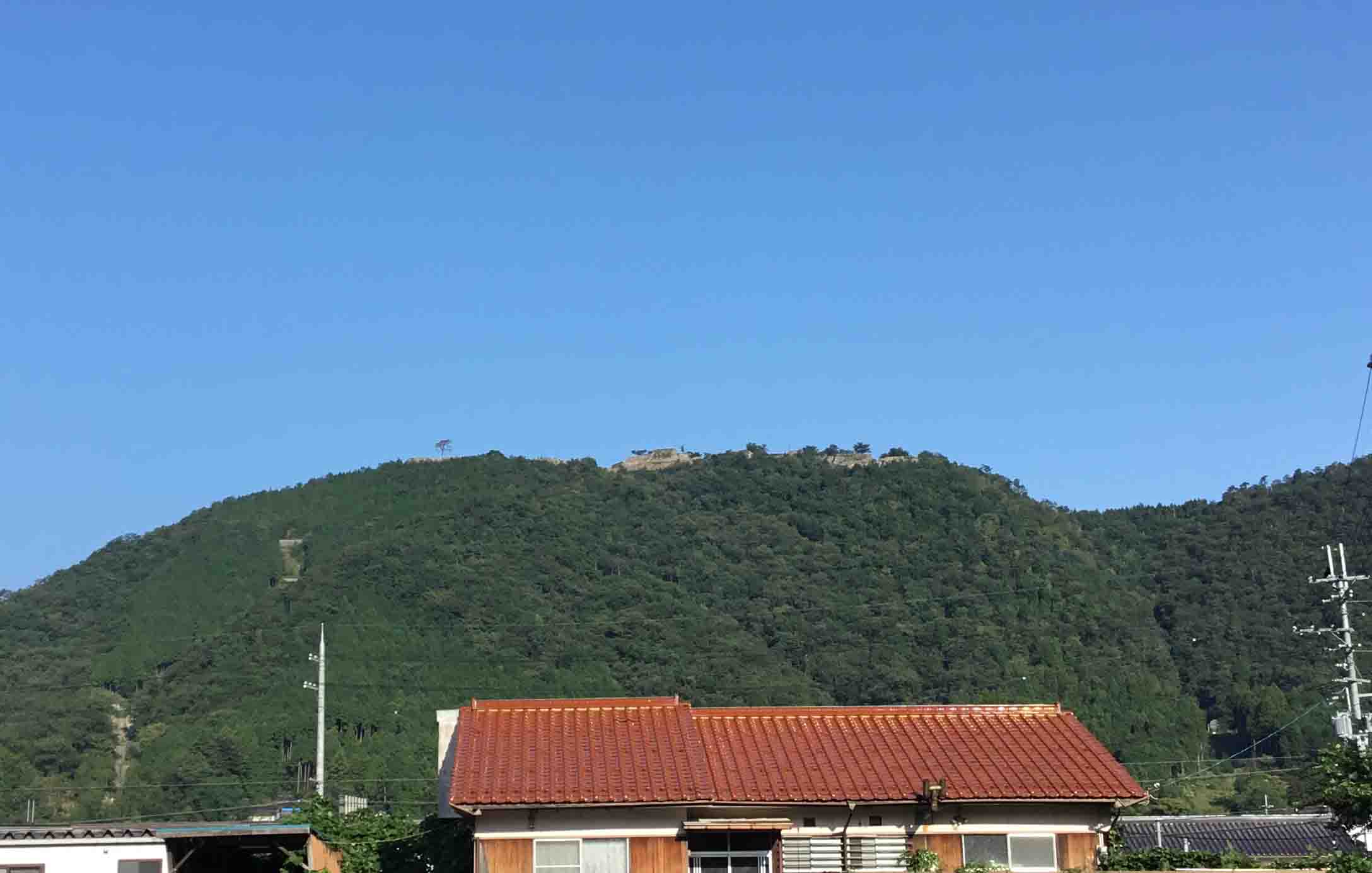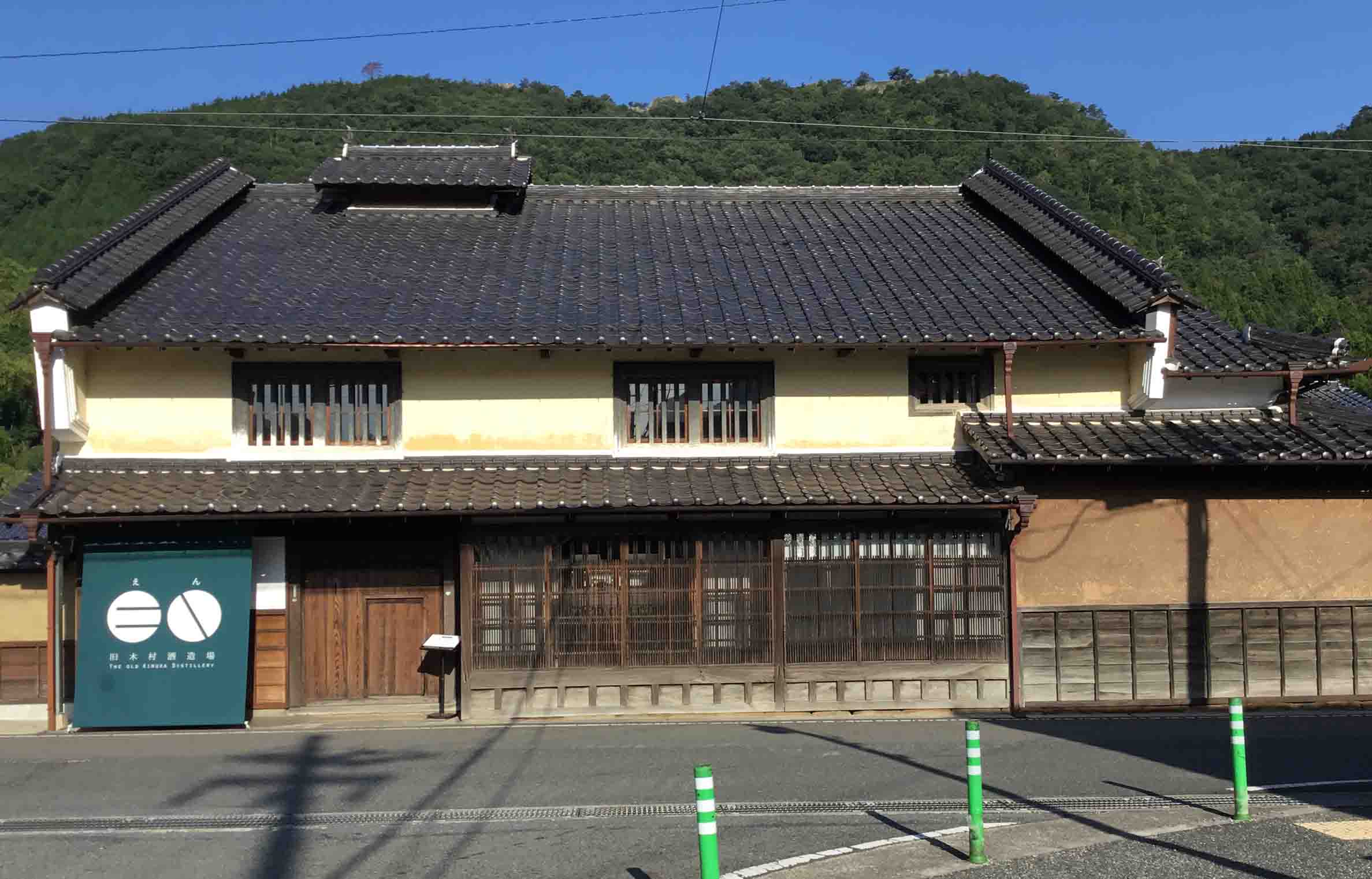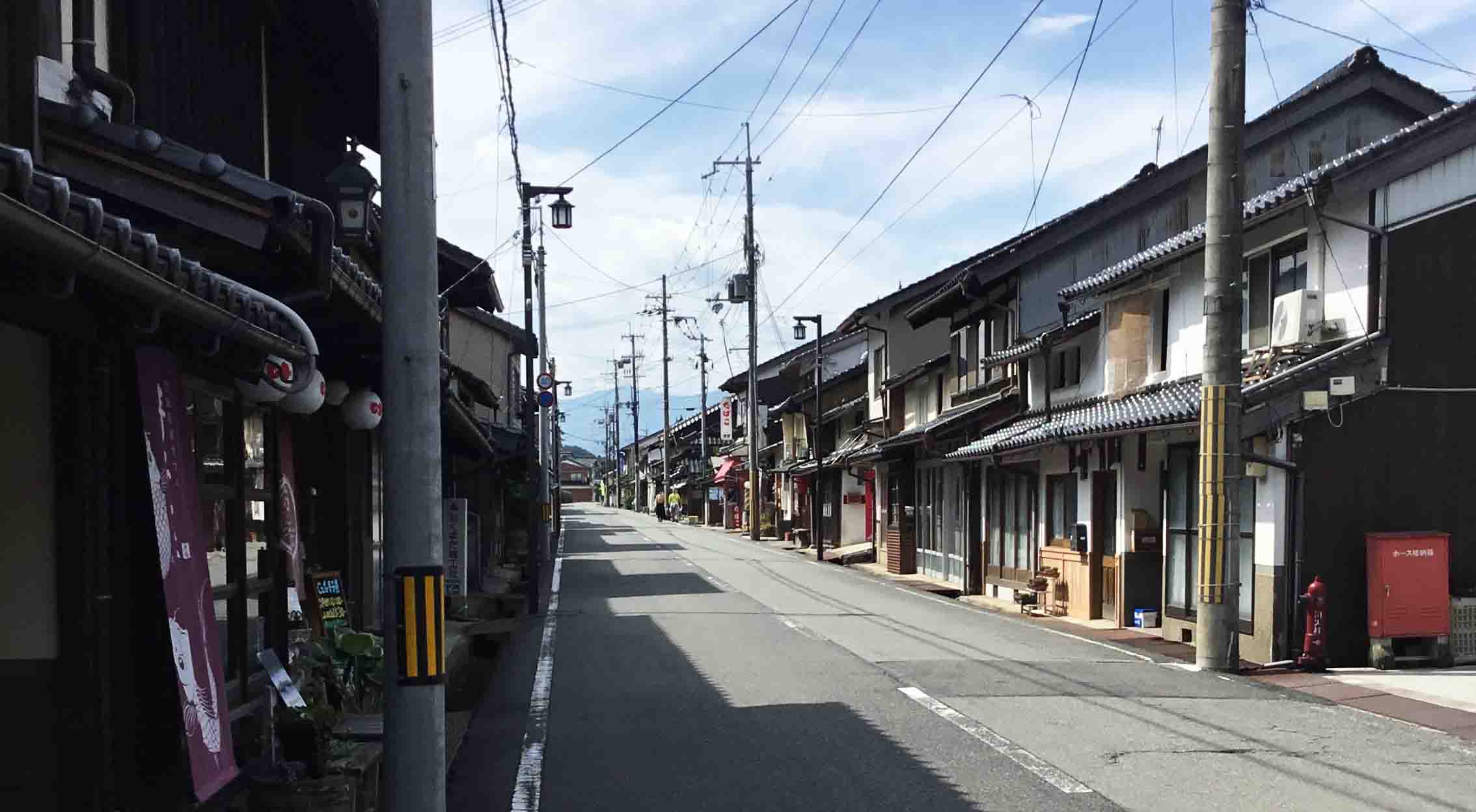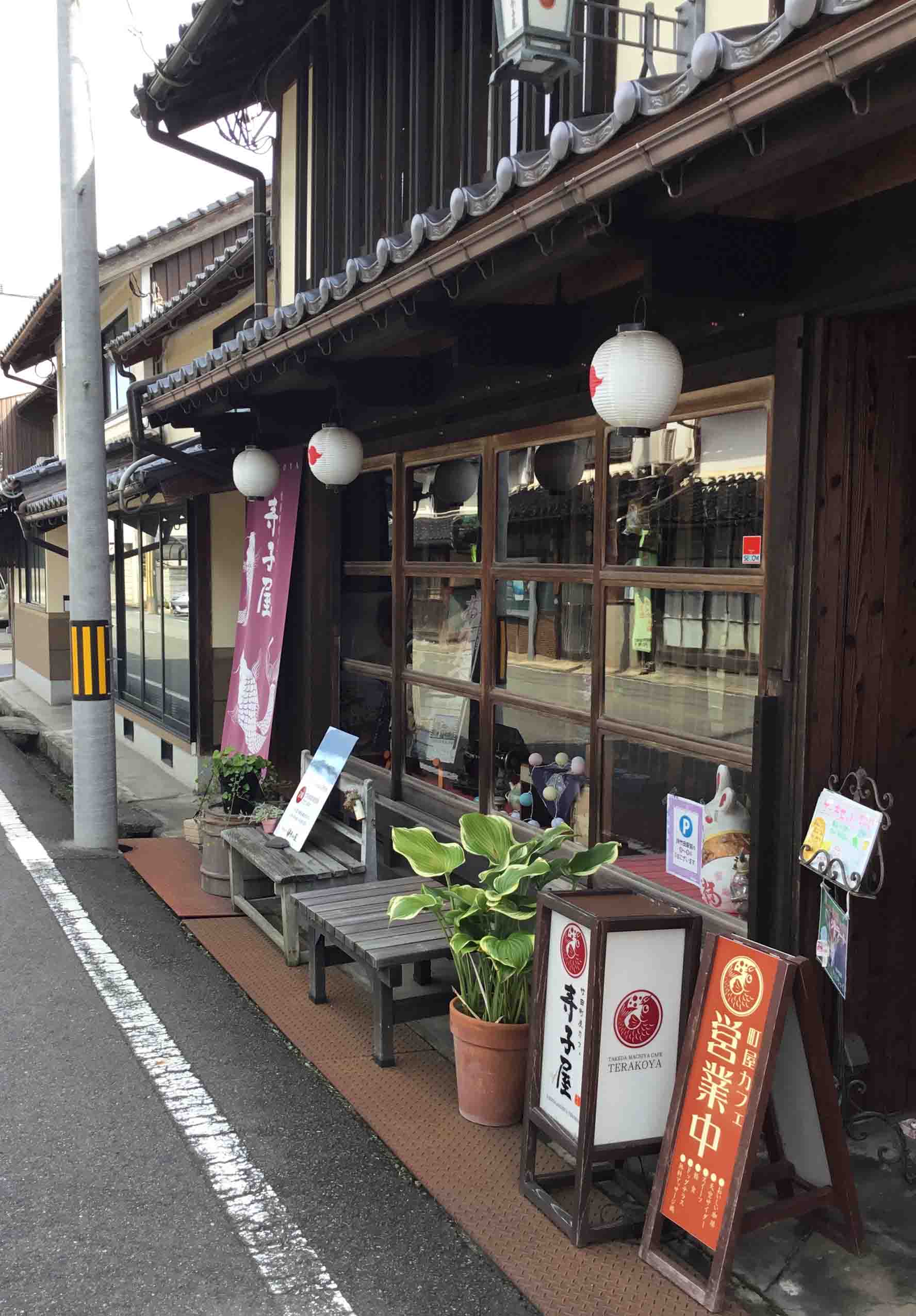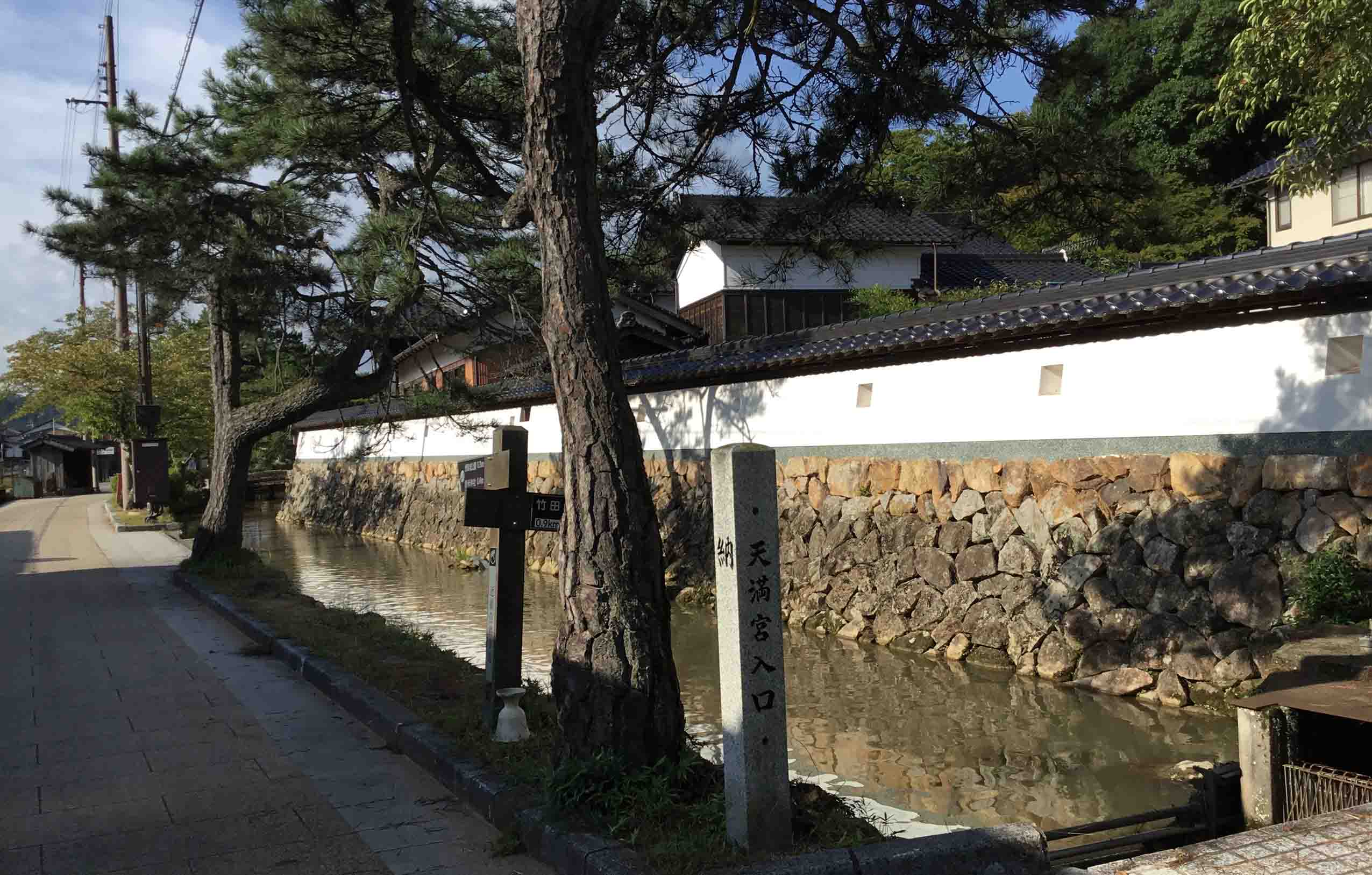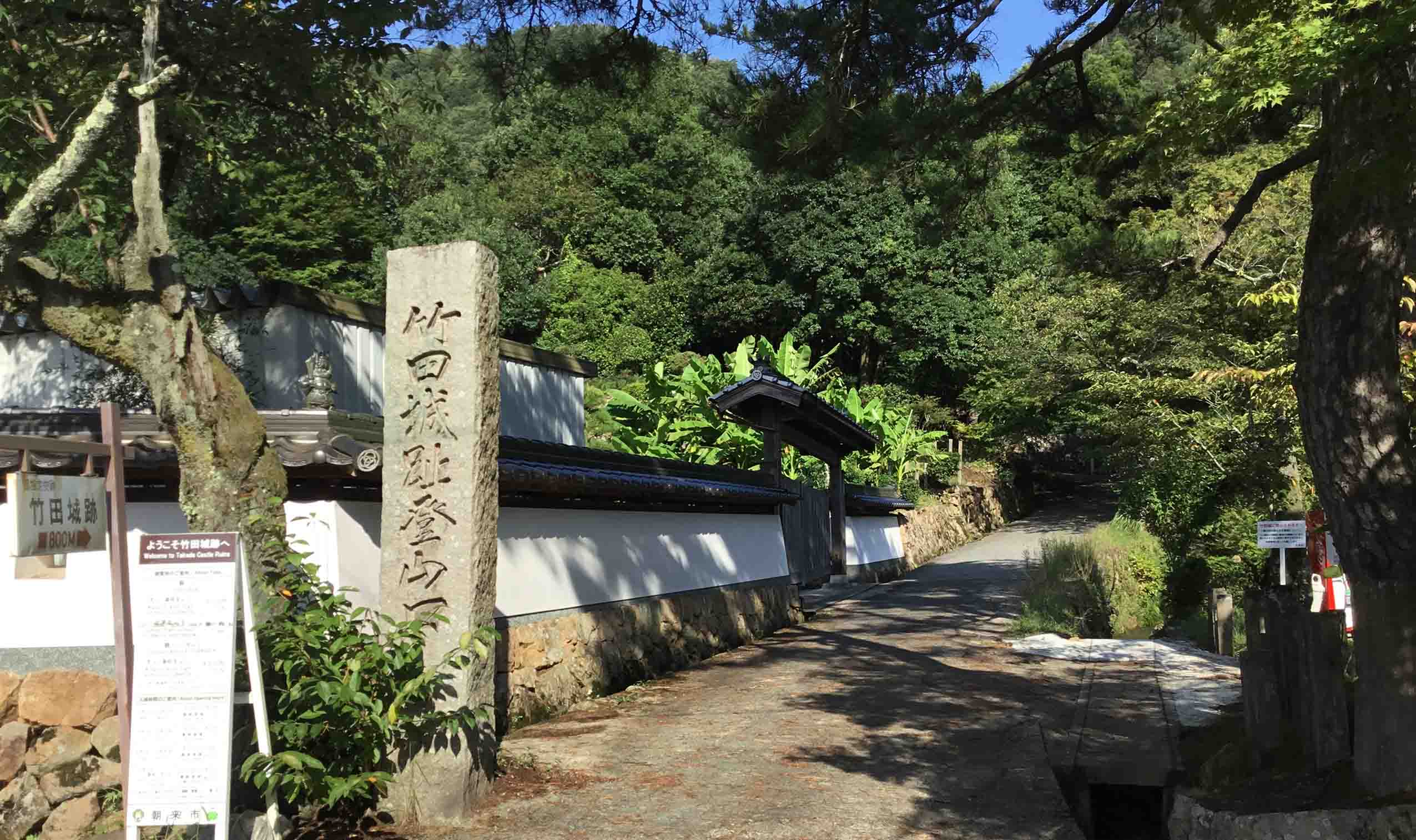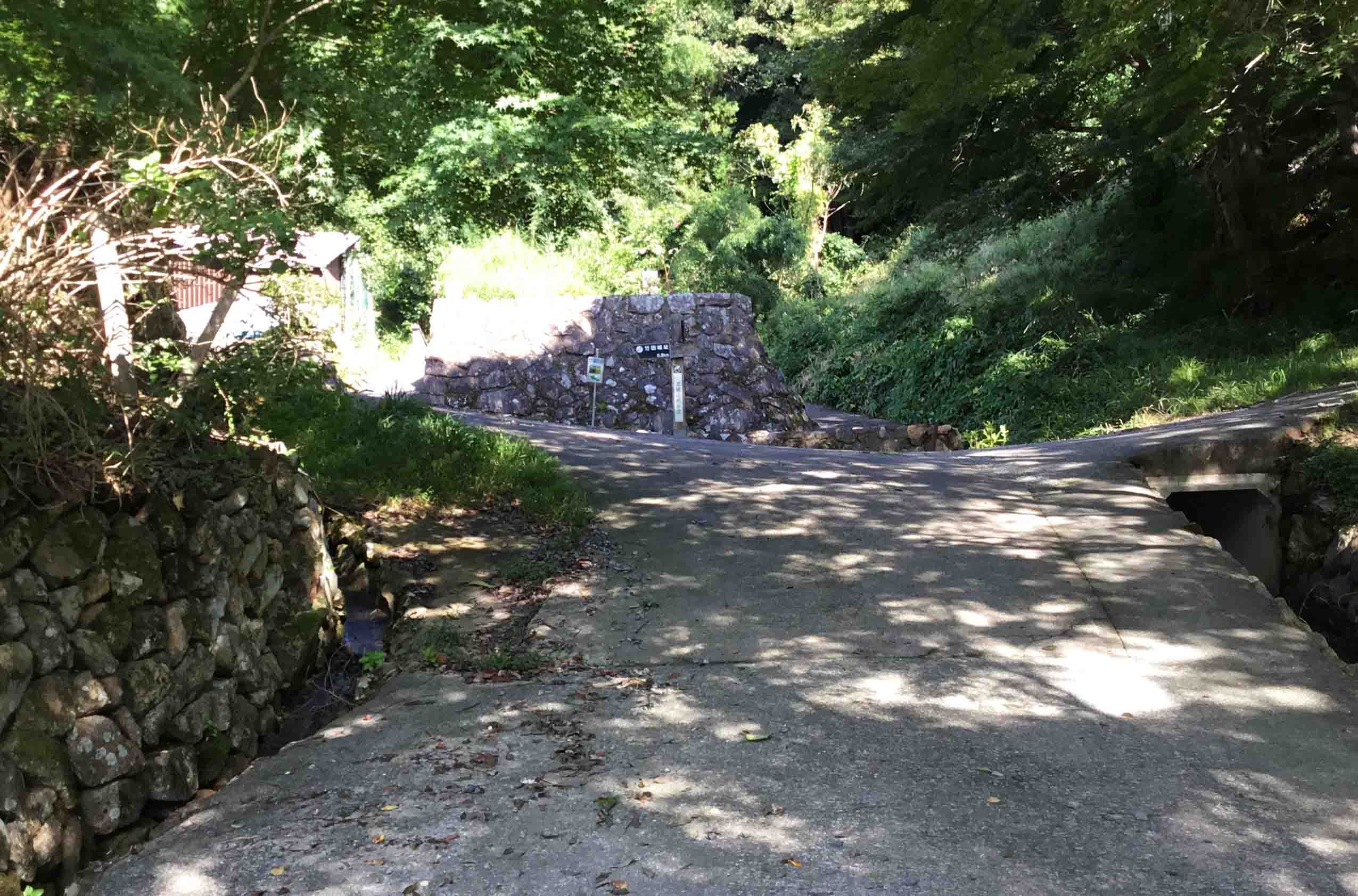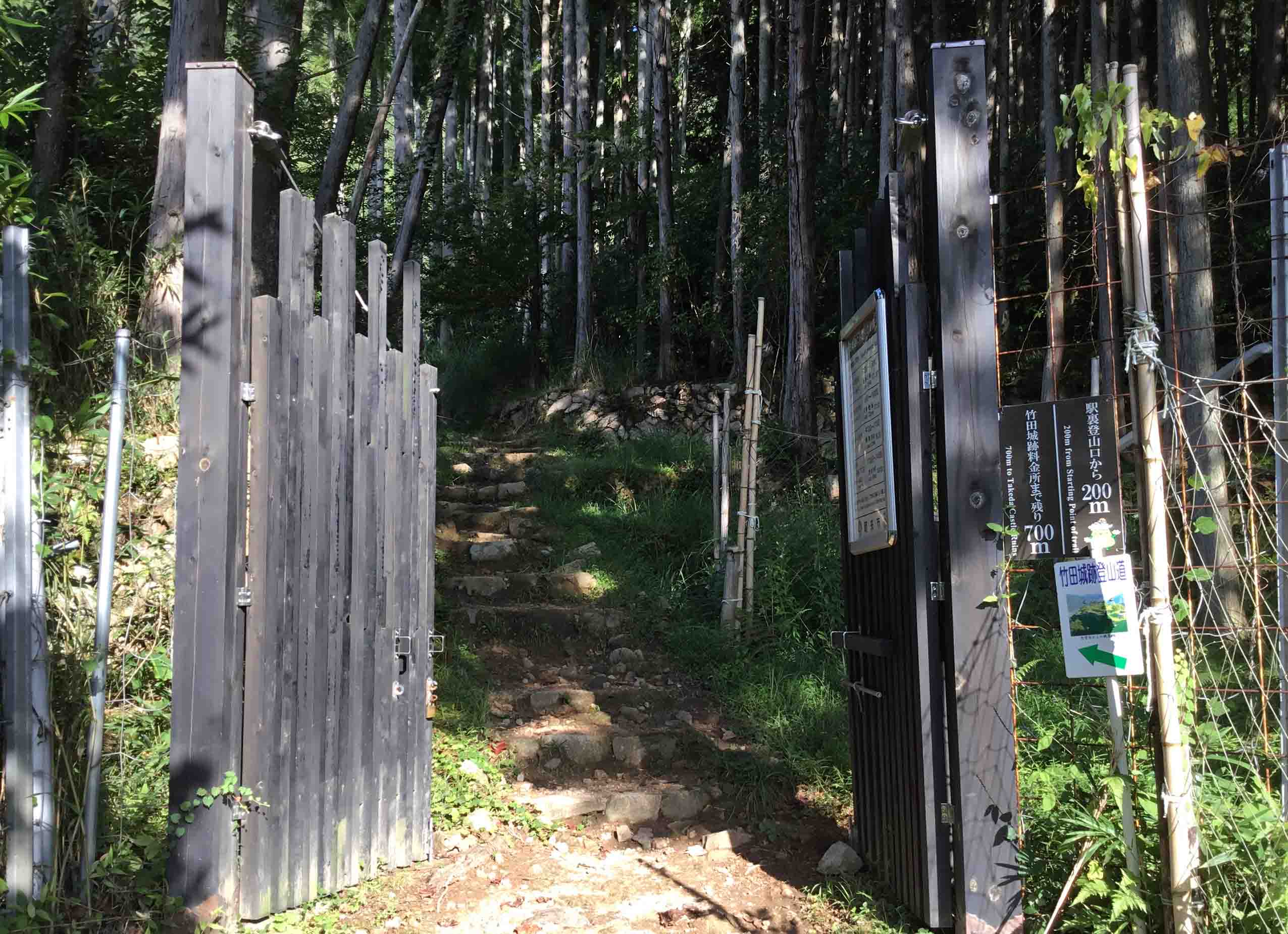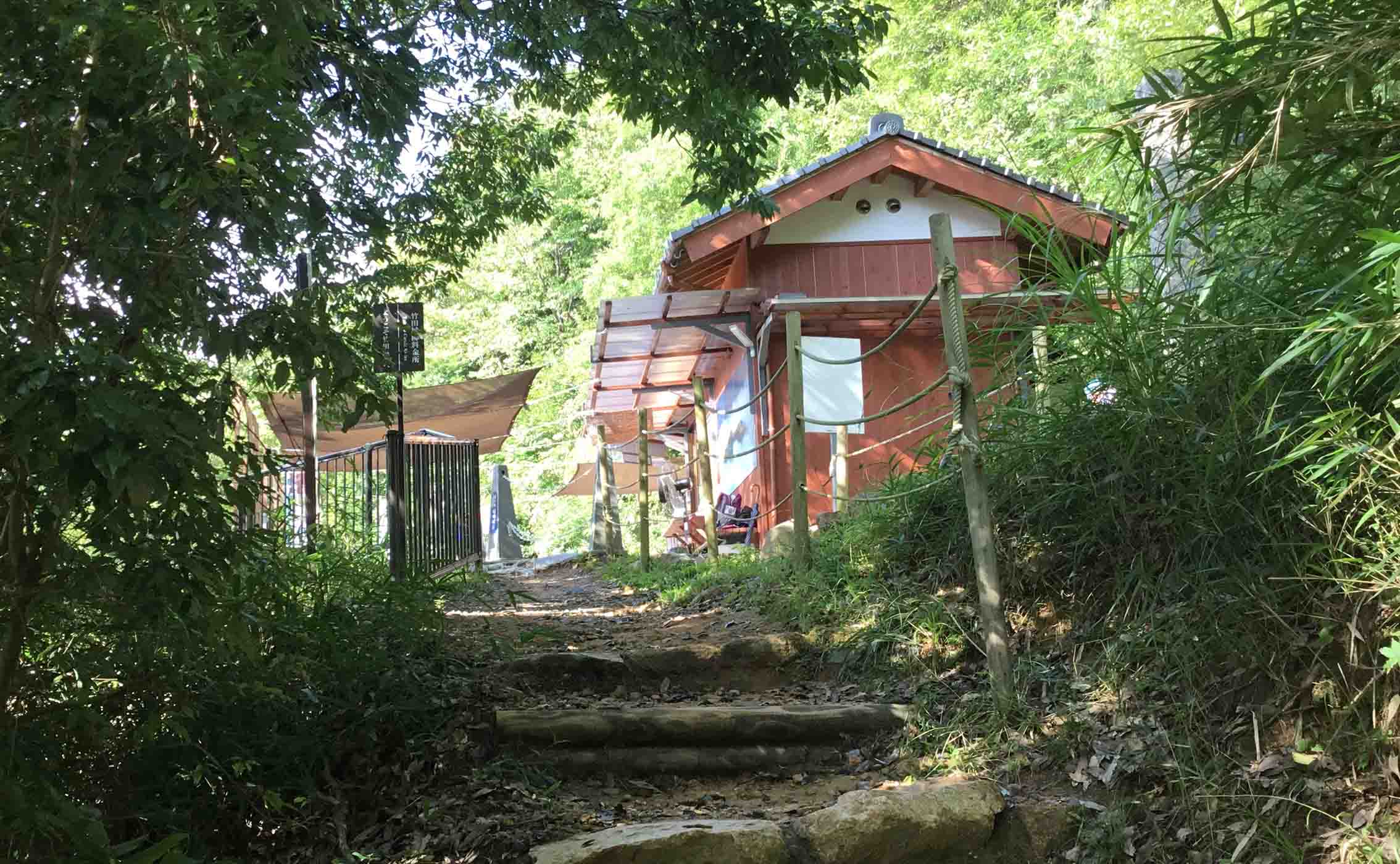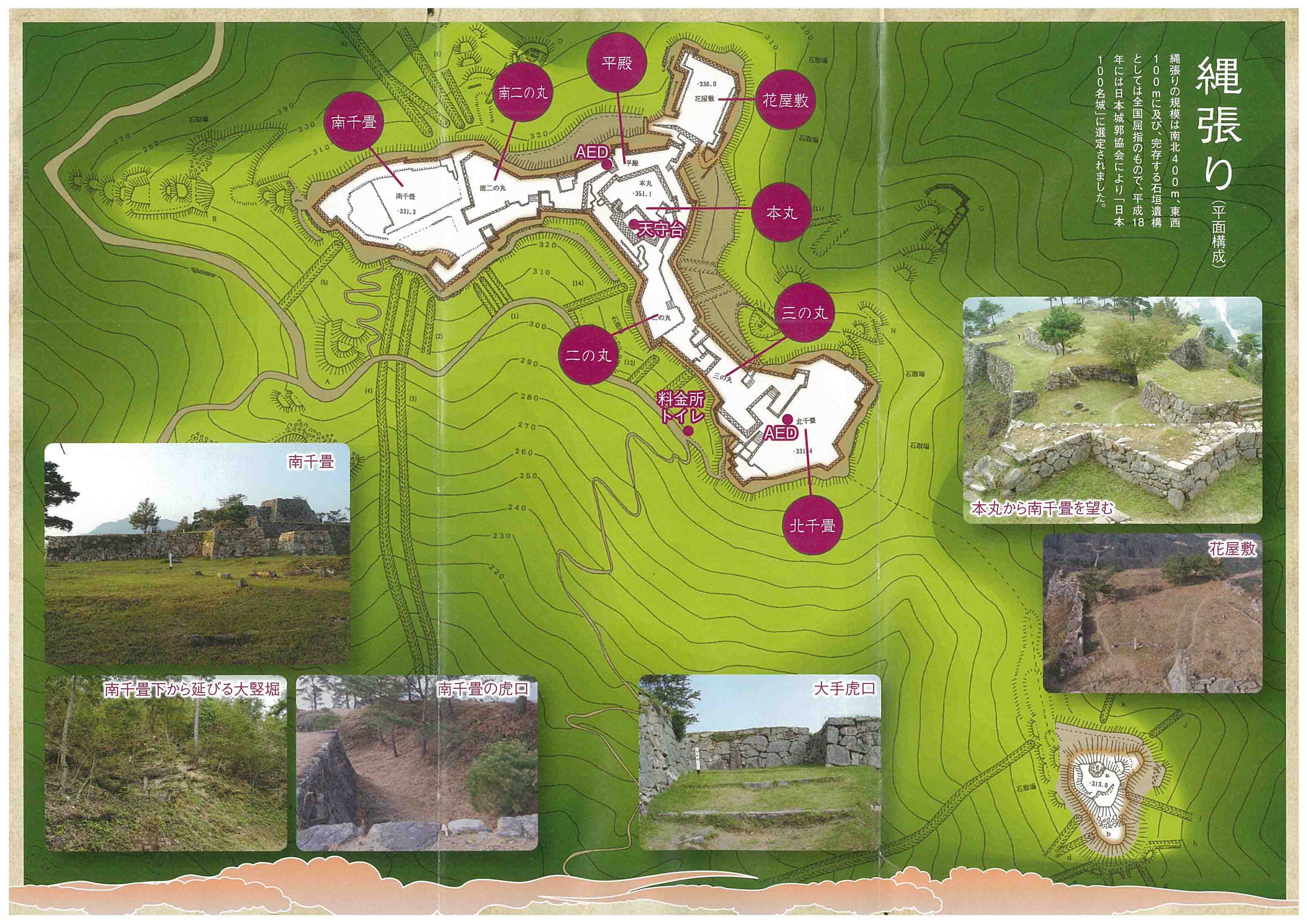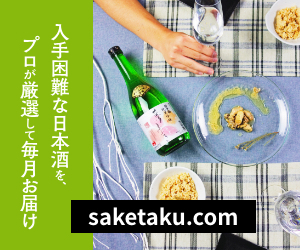- Home
- My Trip Diary
- Takeda Castle as “Machu Picchu of Japan” “Castle in the Sky” – Go in the Castle Ruins –
Takeda Castle as “Machu Picchu of Japan” “Castle in the Sky” – Go in the Castle Ruins –
- 2018/8/27
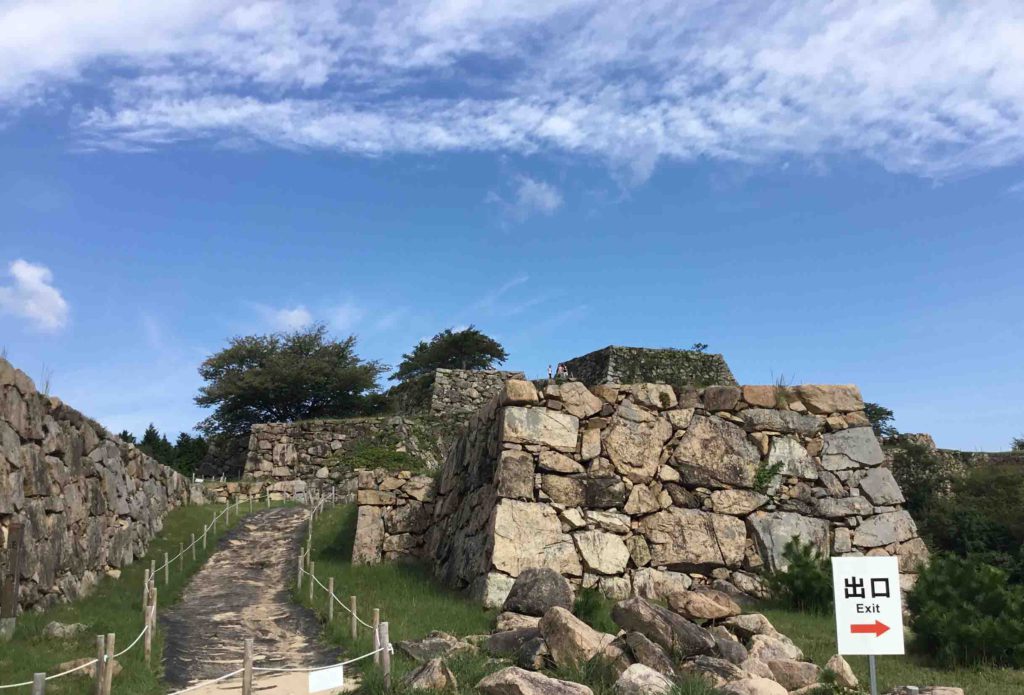
Good evening!
Thank you very much for visiting this blog.
Today’s story is the latter part of Takeda Castle in Asago City, Hyogo Prefecture, continued from the last blog.
This photo above is the one I was going to use for the first part of the last article. I liked the composition, but the sign board of “出口(Exit)” made me hesitate.
If the board was different color……. White was too different in the scenery.
However, I thought that this composition was the best to tell what Takeda Castle was like, so I wanted to use this somewhere. Now here it is.
Contents
To Takeda Castle Ruins
Let’s start the main subject.
After seeing Takeda Castle in the cloud sea from Ritsu’unkyo, I drove my car to Takeda Castle along Prefectural Route 255 to the west.
I hoped to be at the castle while the cloud sea was still there, but it was gone by the time I got there.
What I could see was the castle at the top of the mountain with very clear, blue sky.
The time was about 7:50.
I knew that the cloud sea stays until 8 at latest on the internet.
I thought I should have left the hotel earlier, but it was too late.
I parked my car at the public parking area, and left for the castle by walk.
The road in the photo below is the Prefectural Route 255.
There was a wide river called Maruyama River at the other side of the road, there is a town after crossing a bridge.
After going along this road for a long time, I reached this building.
This building was an information center called “Johokan Tenku no Shiro (Castle in the sky)”.
I turned right here by intuition because I didn’t research the route much beforehand.
It seemed that this area was the city area, and it was designed like a traditional castle town.
The shops looked tasteful and fancy like this below.
The entrance of Takeda Castle Ruins
I passed by Takeda Station, and then I saw a police box.
I entered the street next to the police box, and a railroad crossing and bottom of a mountain were seen ahead.
I went over the crossing, and reached a fine house with earthen walls surrounding it.
If you look at right,
You find the entrance of Takeda Castle.
There was a guide board at the right of the entrance.
It said that a 360 degrees panoramic view of Takeda Castle is waiting at the top of the mountain.
The trail to Takeda Castle
I walked up the trail with excitement.
After going for a while,
A stonewall appeared.
I couldn’t tell whether it was Takeda Castle’s original wall, or it was established later.
When I looked into the woods,
I found another stonewall.
I imagined that this area was the outer-most defense line.
After going further,
I reached a gate.
Of course, it was not an original building of old times, but I think that there was a gate like this in those times.
Over the gate was harder mountain trail.
As you can see from the photo above, the trail was steep and it was hard to walk up.
The weather was clear and the temperature was high, but the trail was not so hot with the shade of woods.
It was moderate exercise and temperature which was good for me who usually don’t have enough exercise.
I walked for about 15 minutes,
And a tollbooth appeared.
The visitors pay entrance fee of 500yen here.
I had a short break here,
And started again to Takeda Castle Ruins over this road.
To make the later explanation easier to understand, I put a guide map of the castle’s property which I got at the tollbooth below.
Otemon to Kita Senjo
Usually, I start a long explanation about the details, but this time I don’t do it because the castle was so beautiful, and I think it’s better to show and share the beauty with movies rather than words.
As well as Ritsuunkyo, I place movies below which I took with my iPad at Takeda Castle Ruins.
I’d like to write about how it was according to the movies.
The original movie was too long, so I divided it into 4 pieces.
Please see here if you want to see the original long version.
The first part is to the Oteguchi (the front gate of a castle).
The road in the photo above comes a corner after going straight, and this movie starts from the corner.
In this movie, there is a stonewall in front of the end of the stairs.
The camera looks back once, and then go ahead and turns left.
There are high walls at the left and front, and I get surrounded by walls there.
This is called “Masugata Koguchi” which is one of Japanese Castle’s structures to do convergent attack to the enemy.
There used to be Otemon (=Oteguchi) here, and there was Honmaru which was the center building of the castle at the left side of Otemon.
In Takeda Castle Ruins, the route and direction to walk were set, so I went to a quarter called “Kita Senjo” first, not directly to Honmaru, according to the route.
I imagine that they had the route because it gets so crowded in weekends, and basically the visitors can’t go reverse (otherwise watchmen give you attention).
Well, this is Kita Senjo.
You can see from the first part that the street I was walking was designed to attack the enemy easily.
After that, the mountain range and the town look far and small.
You can see the limited area in this movie, but the view was actually opened 180 degrees, and it was very beautiful with the continuous mountain range and cities beneath.
This is the sight of Kita Senjo’s north direction.
I should have shoot sideways, so I could show you the castle better.
And the west side of Kita Senjo.
Stonewalls are shown in the first part, and if you look at it carefully, the corner is built with long square rocks and short square rocks piled by turns.
This should be a technique called “Sangi Zumi”, and the wall gets stronger and hard to break in this way.
On the other hand, to see the walls along the trail, rocks of different shapes and sizes are piled up in a disorderly way at a glance.
However, this should be a special technique as well called “Nozura Zumi”, and it’s often seen in castles when a famous daimyo, Nobunaga Oda, succeeded his life. Azuchi Castle is the representative example.
In the guide brochure which I received at the tollbooth, it was mentioned as “Ano Zumi”, not “Nozura Zumi”. So, Takeda’s wall should have been built by a group of technicians called “Ano’shu”.
According to Wikipedia, there are classifications of how to build stonewall such as “Nozura Zumi”, “Uchikomi Tsugi”, “Kirikomi Tsugi”, and so on.
“Ano Zumi” is not exactly a name of a technique, but how to call the walls which were made by “Anoshu”.
After Kita Senjo, I finally went to Honmaru through “San no Maru” and “Ni no Maru” (side buildings of Honmaru).
I thought that this article would be short because of movies, but I noticed that it’s been already 2700 letters by now ^^;
It will be too long to the end because I have to write about “San no Maru”, “Ni no Maru”, and Honmaru, so I stop here and continue in the next blog.
Please look forward to it!
It's our great pleasure if this article is helpful for you.
Restaurant Information
| Shop Name | |
|---|---|
| Prefectures | - |
| Tel | |
| Address | |
| Nearest Station | |
| Homepage | - |
| Business Hours | - |
| Holiday | |
| Introduction | |
| Sake List |
|

